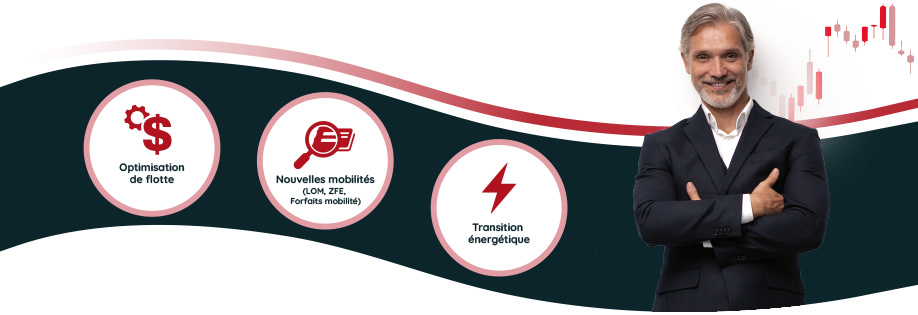Initiated within the framework of the LOM, the energy transition of professional car fleets towards "clean vehicles" (less than 60g of CO2/km) is gradually being imposed on companies and local authorities according to a predefined schedule. Indeed, from 1er From 1 January 2022, companies with a fleet of at least 100 vehicles will have to renew at least 10% of their fleet by choosing low-emission vehicles. This means that 2021 is a key period for the renewal of vehicles which should be anticipated.
From 2024, the required percentage of low-emission vehicles will be 20%, rising to 35% in 2027 and 50% from 2030.
How can this energy migration be optimised to meet these new legislative requirements?
While there is no single answer, there is one criterion that should not be overlooked: the analysis of current vehicle usage. Indeed, the use of an electric or hybrid vehicle, if one wishes both to maximise its environmental impact and minimise its cost, meets specific criteria.
Analyse uses to prioritise choices
We agree: the electric or hybrid vehicle is not a relevant answer in all cases. For example, it would not make sense to assign an electric vehicle with a short range to a heavy driver.
Rushing can have serious consequences. Many companies, for example, quickly gave in to the charms of hybrid vehicles? without anticipating the fact that the vehicles would very rarely be recharged by users, as they had not made provision for compensation (in the case of home recharging). The results? Clean and economical on paper, hybrid vehicles that are not recharged turn out to be more polluting and energy-consuming in use than their combustion counterparts.

It is therefore necessary to pay particular attention to the current uses of vehicles. Of course, the exercise can be tricky if there are no telematics tools to automatically collect precious data such as the mileage done by each vehicle? But solutions do exist!
Optimum Data Mining, Optimum Automotive?s consultancy division, offers, for example, the PLUG & COLLECT solution: a temporary connected offer enabling the collection, over a sufficiently long period, of the data essential to decision-making.
Data such as daily mileage, stop times, recurring stop locations (home, business, etc.) will be fundamental in guiding decisions.
Choosing the right vehicles, installing charging stations in the right places?
The decision to switch from an internal combustion engine to an electric or hybrid vehicle is therefore not an easy one. However, the obstacle course is not over.
Other questions and issues arise as soon as this decision is made: which vehicle to choose: hybrid? electric? Which model? How and where will recharging take place? How to finance the installation of validated charging stations?
These are all questions that need to be asked before taking action. And as we can see, the complexity of the matter can confuse more than one fleet manager who is not accustomed to these new environmental issues.
But don't worry! Solutions exist here too. As in the previous example, Optimum Data Mining offers support on several levels.
- The audit :
It allows the analysis of the current fleet and the uses of each vehicle. On this basis, recommendations will be made for :- to identify vehicles for energy migration
- - identify the most fuel-efficient, compatible 'clean' vehicles
- - recommending the location of charging stations and their financing
The audit allows the fleet manager to define a clear and objective roadmap. He can also, if he wishes, request more comprehensive support.
- Support :
The support can be provided at various levels up to the complete delegation of the fleet management. Fleet ManagersOptimum Data MiningIn this way, they will take charge of the day-to-day management of the fleet (technical, administrative and financial management) and, of course, the necessary energy transition of the fleet. Regular and detailed management reports will make it possible to visualise the actions undertaken and the progress made (particularly in terms of TCO).
In conclusionThe energy transition of a vehicle fleet is a real headache for which no one was prepared. However, the urgency of the climate and the environment inevitably echoes in everyone?s mind.
In order to successfully migrate a fleet of vehicles, it is first necessary to anticipate it, then to equip oneself with the necessary analysis tools and, depending on the case, to benefit from the sound advice of a company specialised in car fleet management.



